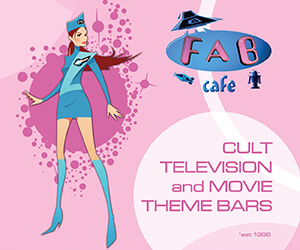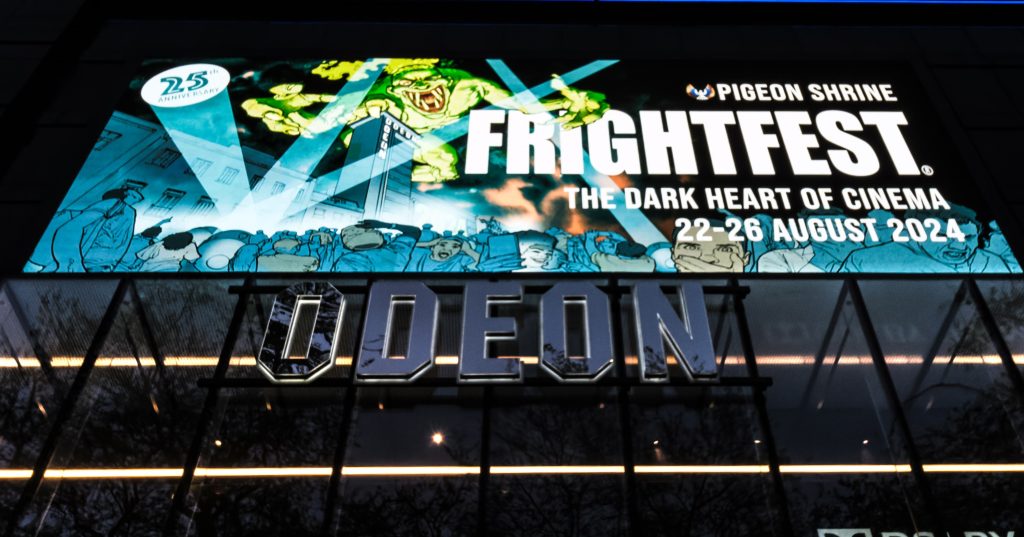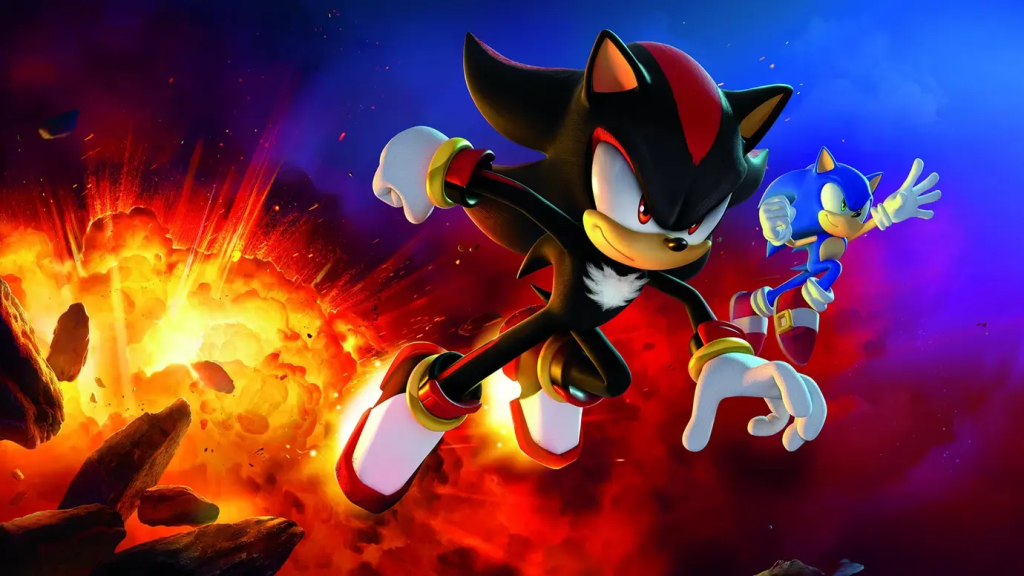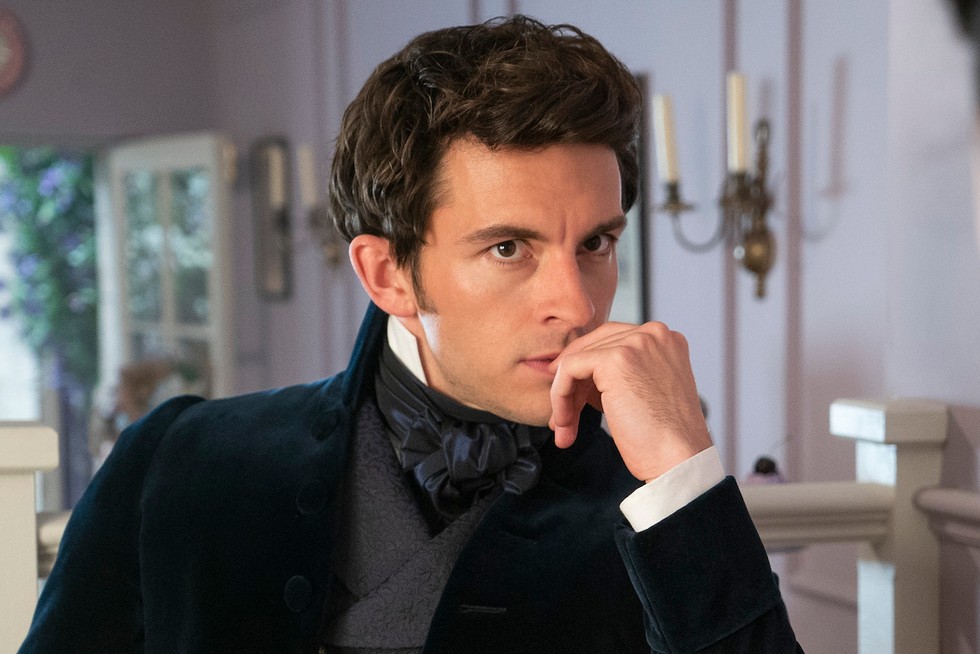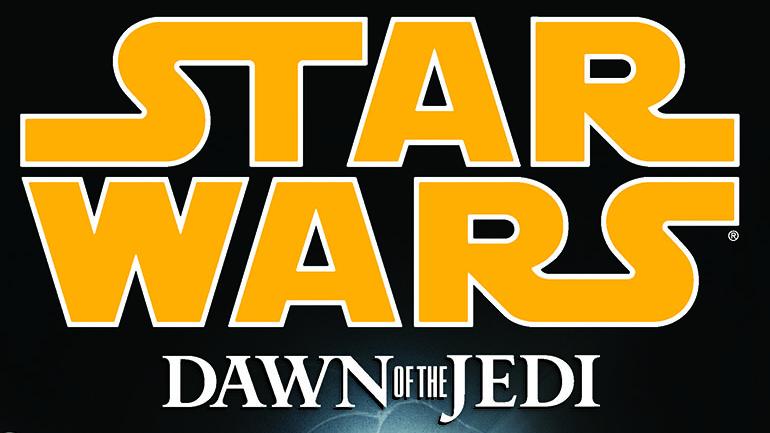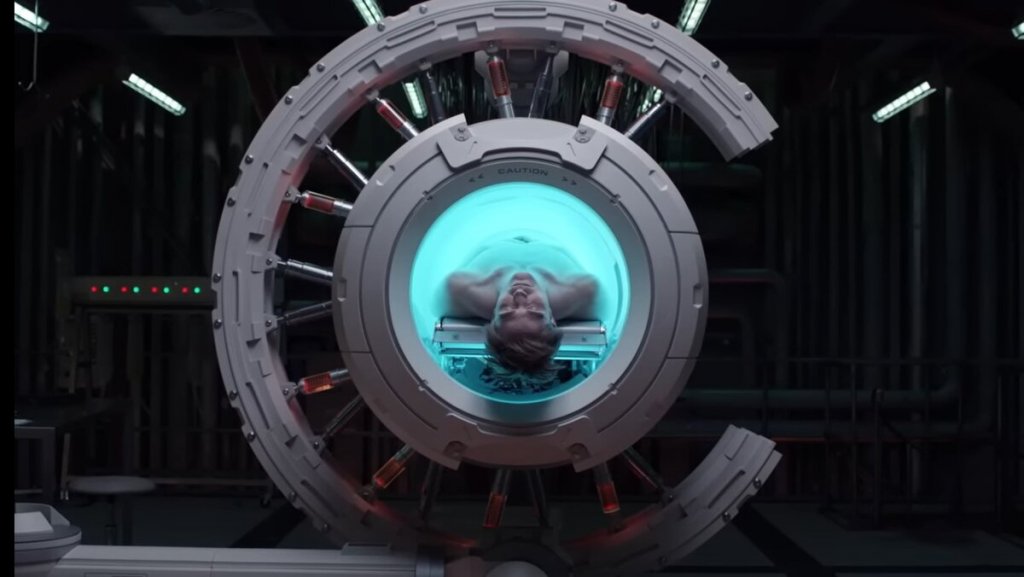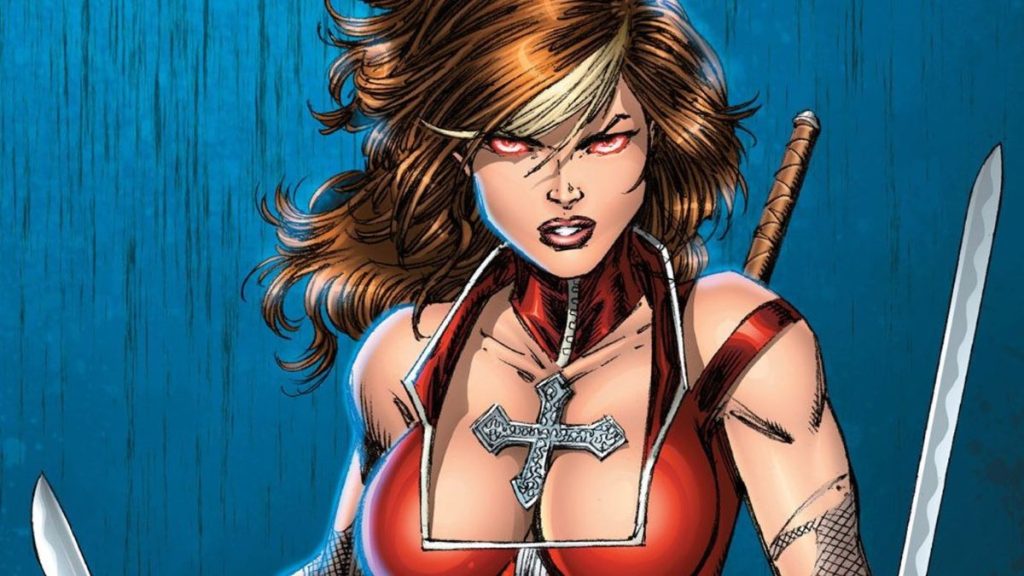It’s hard to believe, but it’s now exactly twenty years since George Lucas first unveiled EPISODE I to the world. The hype itself had started even longer ago. Back in 1995, a VHS re-release of the original trilogy had carried a bonus interview with Lucas in which he blew our collective minds with the news that pre-production had officially begun on a new series of movies, and by the time the first trailer dropped three years later on November 18th, 1998, excitement for the film had reached unprecedented levels. Never in the history of cinema had a movie been so eagerly anticipated; and in just a few short days following its May 19th, 1999 US opening, so reviled. But jump ahead two decades and things are very different. There’s a whole generation of fan who saw TPM in cinemas as younglings and rightly hold the movie in high regard, and its iconic characters still appear across the expansive STAR WARS canon, fully embraced by their new Disney overlords despite initial concerns to the contrary. Not bad for a film accused of doing unspeakable things to the childhoods of irate fans. The world has had two decades to wallow in what George Lucas did wrong, so it’s time STARBURST highlighted what things he got RIGHT! Presenting, in honour of this milestone anniversary, 20 THINGS WE LOVE ABOUT THE PHANTOM MENACE….
- THE GROUNDBREAKING SPECIAL EFFECTS
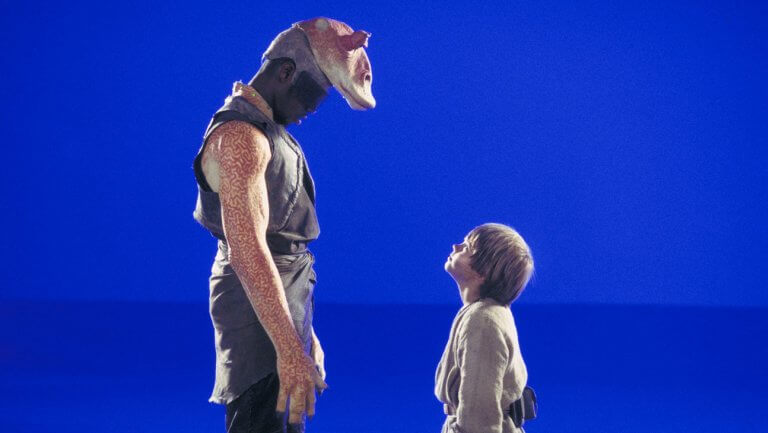 Looking back to 1999, film fans will remember well the ‘bullet time’ effect in The Matrix that saw Keanu Reeves’ Neo dodge projectiles as the camera rotated around him. It was a marvel of technology, a stunning piece of VFX work that has continued to develop over the years as the digital world becomes more defined. Impressive, no doubt, but compared to the digital backlot of The Phantom Menace, the arrival of CGI characters who could lead a film and the blending of physical models and actors into digital environments…. well, to say TPM was mugged at the Oscars would be an understatement. Cloth simulators made costumes real in the digital world and animatics were taken to a new level as pre-viz technology improved. ILM applied photos and matte paintings onto 3D geometry, making the racetrack of the Boonta Eve podrace an endlessly malleable environment. The Phantom Menace was arguably as big a leap forward for visual effects as A New Hope had been 22 years earlier, and without those advances and the new era that Phantom ushered in, modern cinema two decades later would simply not be the same. | MN
Looking back to 1999, film fans will remember well the ‘bullet time’ effect in The Matrix that saw Keanu Reeves’ Neo dodge projectiles as the camera rotated around him. It was a marvel of technology, a stunning piece of VFX work that has continued to develop over the years as the digital world becomes more defined. Impressive, no doubt, but compared to the digital backlot of The Phantom Menace, the arrival of CGI characters who could lead a film and the blending of physical models and actors into digital environments…. well, to say TPM was mugged at the Oscars would be an understatement. Cloth simulators made costumes real in the digital world and animatics were taken to a new level as pre-viz technology improved. ILM applied photos and matte paintings onto 3D geometry, making the racetrack of the Boonta Eve podrace an endlessly malleable environment. The Phantom Menace was arguably as big a leap forward for visual effects as A New Hope had been 22 years earlier, and without those advances and the new era that Phantom ushered in, modern cinema two decades later would simply not be the same. | MN
- CORUSCANT
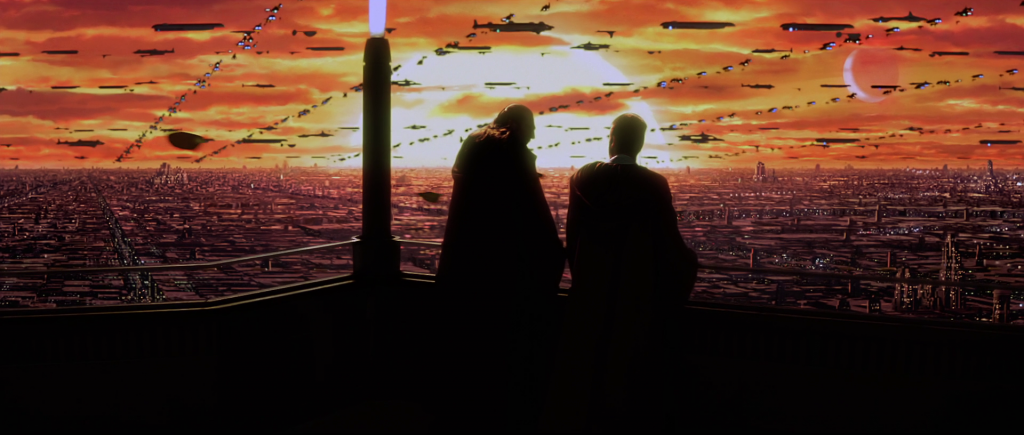 While for many of us, the original trilogy is the definitive Star Wars, its creator was famously frustrated by the way his imagination was constrained by the technology of the time. Not so when it came to the prequels. Advances in effects, particularly the development of CGI, finally meant the alien landscapes Lucas envisioned could be fully realised on screen. And nowhere is it more breath-taking than Coruscant. Although it had been seen briefly during the special edition of Return of the Jedi, Phantom Menace gave Lucas the chance to fully dive into the planet-wide city. And while Attack of the Clones’ speeder chase is technically more impressive, it’s the initial impression here that sticks in the mind. A sun-drenched, gleaming cityscape stretching as far as the eye can see. When our heroes arrive here after the familiar, sandy wastes of Tatooine, the contrast couldn’t be starker. While Anakin’s homeworld consisted largely of practical sets, Coruscant is completely otherworldly. It’s familiar yet fantastical, something based in our world, yet transformed into something truly alien; everything Star Wars should be. It’s the most beautiful, fully realised world in the entire saga, and we’ve got The Phantom Menace to thank for it. | IR
While for many of us, the original trilogy is the definitive Star Wars, its creator was famously frustrated by the way his imagination was constrained by the technology of the time. Not so when it came to the prequels. Advances in effects, particularly the development of CGI, finally meant the alien landscapes Lucas envisioned could be fully realised on screen. And nowhere is it more breath-taking than Coruscant. Although it had been seen briefly during the special edition of Return of the Jedi, Phantom Menace gave Lucas the chance to fully dive into the planet-wide city. And while Attack of the Clones’ speeder chase is technically more impressive, it’s the initial impression here that sticks in the mind. A sun-drenched, gleaming cityscape stretching as far as the eye can see. When our heroes arrive here after the familiar, sandy wastes of Tatooine, the contrast couldn’t be starker. While Anakin’s homeworld consisted largely of practical sets, Coruscant is completely otherworldly. It’s familiar yet fantastical, something based in our world, yet transformed into something truly alien; everything Star Wars should be. It’s the most beautiful, fully realised world in the entire saga, and we’ve got The Phantom Menace to thank for it. | IR
- QUI-GON JINN
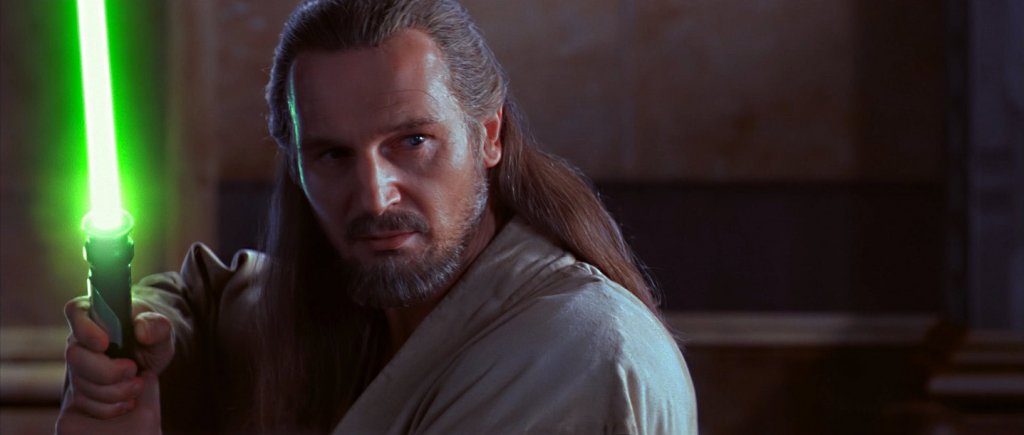 You could argue that of all the new characters introduced in The Phantom Menace, Qui-Gon Jinn had the most influence on the story going forward. Anakin, Palpatine, Obi-Wan, and Yoda were existing characters that were always going to be a part of the story, but Qui-Gon was entirely new and, as portrayed brilliantly by Liam Neeson, he not only informed the character of Kenobi but also shined a light on the mindset of the Jedi Order and the wider Galactic Republic of the time. He understood that young Anakin was vital to the balance of the Force, a chosen one of prophecy, and was determined to train him. He wasn’t on the Jedi Council, despite clearly being more than qualified to be one of their senior Jedi, and had his own view of how the Force worked that didn’t jibe with their rigid beliefs. His loss, to Obi-Wan, the Jedi, and, in particular, Anakin, changed the course of galactic history and brought the Sith out of the shadows. Imagine how different the galaxy would be if Count Dooku later had access to Qui-Gon’s council, or how Anakin would have been trained…. | MN
You could argue that of all the new characters introduced in The Phantom Menace, Qui-Gon Jinn had the most influence on the story going forward. Anakin, Palpatine, Obi-Wan, and Yoda were existing characters that were always going to be a part of the story, but Qui-Gon was entirely new and, as portrayed brilliantly by Liam Neeson, he not only informed the character of Kenobi but also shined a light on the mindset of the Jedi Order and the wider Galactic Republic of the time. He understood that young Anakin was vital to the balance of the Force, a chosen one of prophecy, and was determined to train him. He wasn’t on the Jedi Council, despite clearly being more than qualified to be one of their senior Jedi, and had his own view of how the Force worked that didn’t jibe with their rigid beliefs. His loss, to Obi-Wan, the Jedi, and, in particular, Anakin, changed the course of galactic history and brought the Sith out of the shadows. Imagine how different the galaxy would be if Count Dooku later had access to Qui-Gon’s council, or how Anakin would have been trained…. | MN
- PALPATINE’S MASTERPLAN
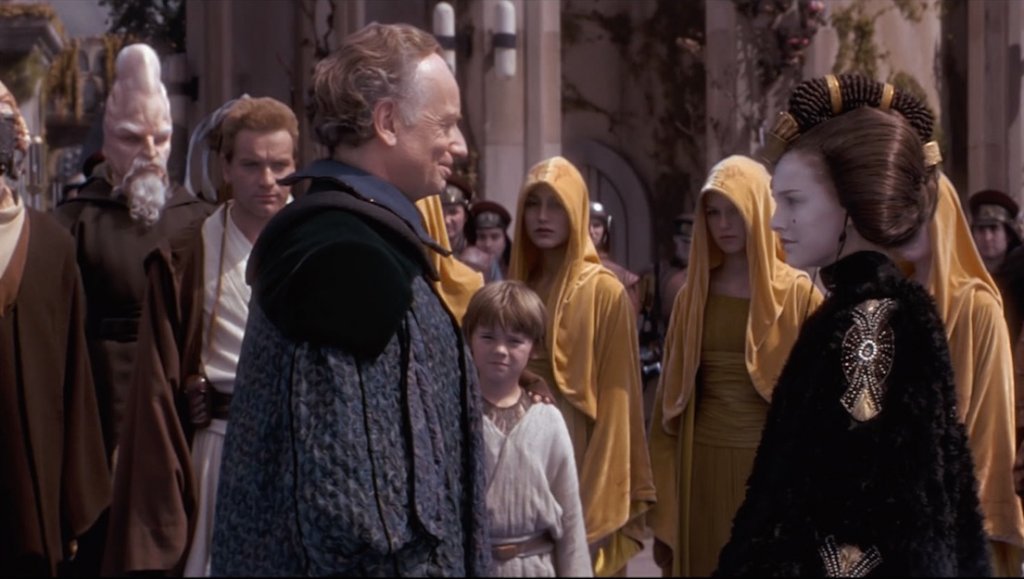 “Congratulations on your election, Chancellor.” That one throwaway line – delivered by Padmé during the climactic victory celebration – skilfully undermines much of what preceded it. The Trade Federation and their droid army have been defeated, Darth Maul dispatched, and peace has returned to Naboo. And then Lucas reminds us that the bad guy not only planned everything but that he actually won. Naboo native Sheev Palpatine arranged for the invasion of his own planet to help get himself elected to high office, and it worked. For a blockbuster to end this way is unusual. For it to be done almost as an aside is probably unique. It’s rare that The Phantom Menace gets credited for being subtle, but Lucas pulls it off so casually that it’s easy for many viewers, unaware Palpatine and Sidious are the same character, to miss entirely. It’s a trick repeated more overtly in its sequel Attack of the Clones, where the Sith Lord commands both sides in the conflict. There he uses it to start the Clone War, which sees his eventual elevation to Emperor. But the way Palpatine’s machinations are hidden amongst the other plot strands here is, frankly, a genius move by Lucas. | IR
“Congratulations on your election, Chancellor.” That one throwaway line – delivered by Padmé during the climactic victory celebration – skilfully undermines much of what preceded it. The Trade Federation and their droid army have been defeated, Darth Maul dispatched, and peace has returned to Naboo. And then Lucas reminds us that the bad guy not only planned everything but that he actually won. Naboo native Sheev Palpatine arranged for the invasion of his own planet to help get himself elected to high office, and it worked. For a blockbuster to end this way is unusual. For it to be done almost as an aside is probably unique. It’s rare that The Phantom Menace gets credited for being subtle, but Lucas pulls it off so casually that it’s easy for many viewers, unaware Palpatine and Sidious are the same character, to miss entirely. It’s a trick repeated more overtly in its sequel Attack of the Clones, where the Sith Lord commands both sides in the conflict. There he uses it to start the Clone War, which sees his eventual elevation to Emperor. But the way Palpatine’s machinations are hidden amongst the other plot strands here is, frankly, a genius move by Lucas. | IR
- PADMÉ AMIDALA
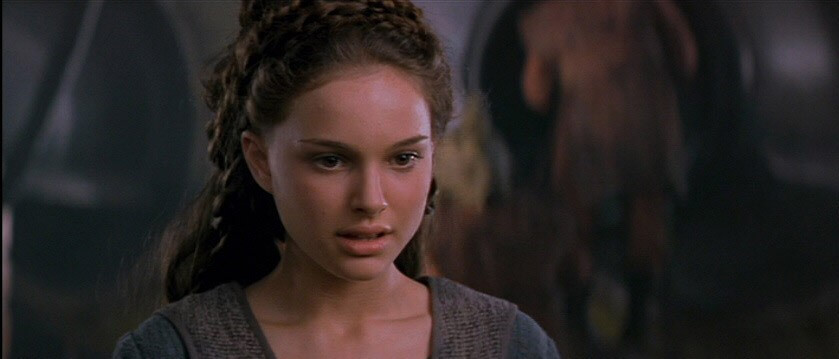
The saying ‘Like mother, like daughter’ holds true even in the Star Wars universe with the incredible Leia Organa and her mother, Queen Padmé Amidala. Natalie Portman, who portrays Amidala in all three prequel films, has stated in the past that she used the late Carrie Fisher’s performance as the backbone to her own, imagining the kind of woman who would have had a fiery daughter like Leia. It’s a genuine shame these two powerful women were never able to form a relationship in the films. Amidala’s grace and beauty coupled with her intelligence, bravery, and dedication to her people make her a formidable opponent to anyone who would dare cross her. She could lay waste to her enemies with a sure shot or a well timed, withering gaze. And let’s not forget she did it all while wearing some of the most complicated, eye-poppingly gorgeous costumes in the history of filmmaking! | VB
- THE EVOLUTION OF THE LIGHTSABER
 While all of us here at Moonbase Alpha have a considerable affinity for the famed Holy Trilogy, the lightsaber usage in those original Star Wars pictures was blown out of the water by the prequel trilogy. Sure, the intensity of Return of the Jedi’s Luke vs Vader fight is always going to be tough to top, but the prequel trilogy looked to reinvent what we’d become accustomed to where the trusty lightsaber was concerned. Case in point, Episode I had Qui-Gon using his weapon of choice to melt through a sealed door, while that same opening sequence saw him and Obi-Wan Kenobi use their lightsabers to deflect blaster fire. Such things seem commonplace when thinking about the Star Wars brand nowadays, but it was The Phantom Menace that first introduced such concepts. Then there’s also the small fact that the movie again took its lightsaber game to a whole other level by, y’know, introducing a double-bladed version. And when you have a martial arts expert such as Ray Park wielding that weapon as Darth Maul, that allowed the ante to be upped in terms of the movement and speed of the lightsaber work on display. If the original trilogy’s lightsaber battles were slow and methodical chess games, The Phantom Menace flipped the board off the table, chugged a load of Red Bull and jumped off a cliff sans parachute all while managing to maintain the intensity that makes such battles work in the first place. | AP
While all of us here at Moonbase Alpha have a considerable affinity for the famed Holy Trilogy, the lightsaber usage in those original Star Wars pictures was blown out of the water by the prequel trilogy. Sure, the intensity of Return of the Jedi’s Luke vs Vader fight is always going to be tough to top, but the prequel trilogy looked to reinvent what we’d become accustomed to where the trusty lightsaber was concerned. Case in point, Episode I had Qui-Gon using his weapon of choice to melt through a sealed door, while that same opening sequence saw him and Obi-Wan Kenobi use their lightsabers to deflect blaster fire. Such things seem commonplace when thinking about the Star Wars brand nowadays, but it was The Phantom Menace that first introduced such concepts. Then there’s also the small fact that the movie again took its lightsaber game to a whole other level by, y’know, introducing a double-bladed version. And when you have a martial arts expert such as Ray Park wielding that weapon as Darth Maul, that allowed the ante to be upped in terms of the movement and speed of the lightsaber work on display. If the original trilogy’s lightsaber battles were slow and methodical chess games, The Phantom Menace flipped the board off the table, chugged a load of Red Bull and jumped off a cliff sans parachute all while managing to maintain the intensity that makes such battles work in the first place. | AP
- THE SCORE
The film might well have received a hostile reception on release, but there’s one element that can always be relied on and is never criticised – the rousing score by the maestro, John Williams. Sixteen years had passed since Return of the Jedi, but we all felt our collective hearts skip a beat when the greatest fanfare in the history of cinema came roaring out triumphantly at us again in 1999. And what a score this one was, giving us the magnificent Duel of the Fates, destined to become as memorable as Williams’ Imperial March twenty-one years earlier, and the wistful Anakin’s Theme. Sadly, our long wait for the film after the American release (and not to mention the burgeoning Internet) made avoiding spoilers nigh on impossible, a fact made worse when the soundtrack CD was released ahead of the film, bearing tracks titled Qui-Gon’s Noble End and Qui-Gon’s Funeral. We’ll overlook our urge to kick Sony Classical swiftly in the midi-chlorians for the transgression, because let’s face it, John Williams’s conducting baton wields even greater power than a double-bladed lightsaber! | RP
- THE PODRACE
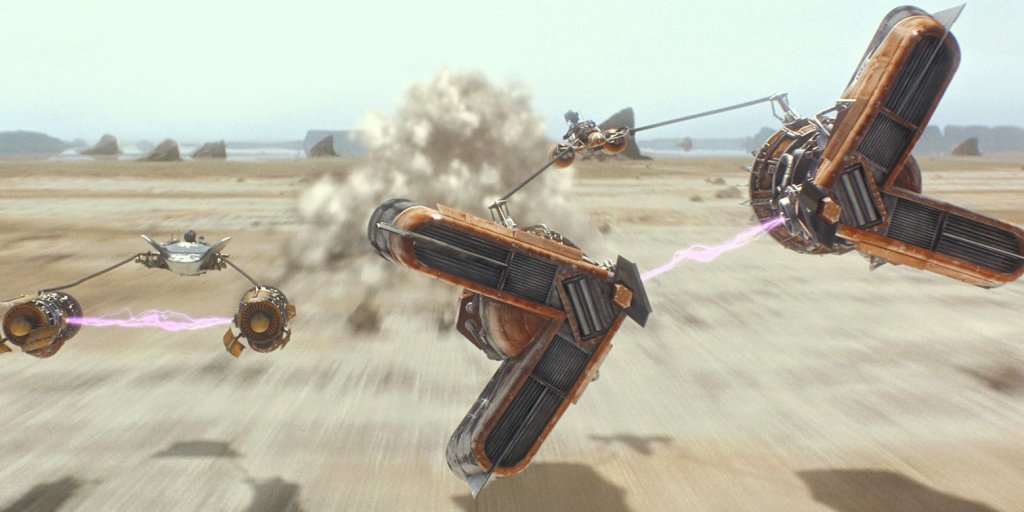 We love a little bit of pomp and ceremony in our Star Wars films, and one of the grandest tableaus of them all is the utterly thrilling Boonta Eve Classic that took place along the hot desert sands and labyrinthine canyons of Tatooine. This sporting event attracts competitors from all over the galaxy. Only the best of the best will survive. Fatalities are high. The sport is simple – navigate the course and stay alive. First past the post takes all. Of course, the race itself is a combination of the Ben-Hur chariot race, Nascar, and Wacky Races. There are also those who’ll stop at no level of cheating to secure their victory – prime example Sebulba, the Dug who is only too happy to sabotage his competitors’ pods. Despite Sebulba’s best efforts and random potshots by the indigenous Tusken Raiders, local boy Anakin Skywalker takes first, in his home-made pod, no less. Guts and midi-chlorians win the day. But let’s also give a shoutout to the enthusiastic little Jawa who cheers the racers as they pass. “Utini!” | RP
We love a little bit of pomp and ceremony in our Star Wars films, and one of the grandest tableaus of them all is the utterly thrilling Boonta Eve Classic that took place along the hot desert sands and labyrinthine canyons of Tatooine. This sporting event attracts competitors from all over the galaxy. Only the best of the best will survive. Fatalities are high. The sport is simple – navigate the course and stay alive. First past the post takes all. Of course, the race itself is a combination of the Ben-Hur chariot race, Nascar, and Wacky Races. There are also those who’ll stop at no level of cheating to secure their victory – prime example Sebulba, the Dug who is only too happy to sabotage his competitors’ pods. Despite Sebulba’s best efforts and random potshots by the indigenous Tusken Raiders, local boy Anakin Skywalker takes first, in his home-made pod, no less. Guts and midi-chlorians win the day. But let’s also give a shoutout to the enthusiastic little Jawa who cheers the racers as they pass. “Utini!” | RP
- STAR WARS EPISODE I: RACER
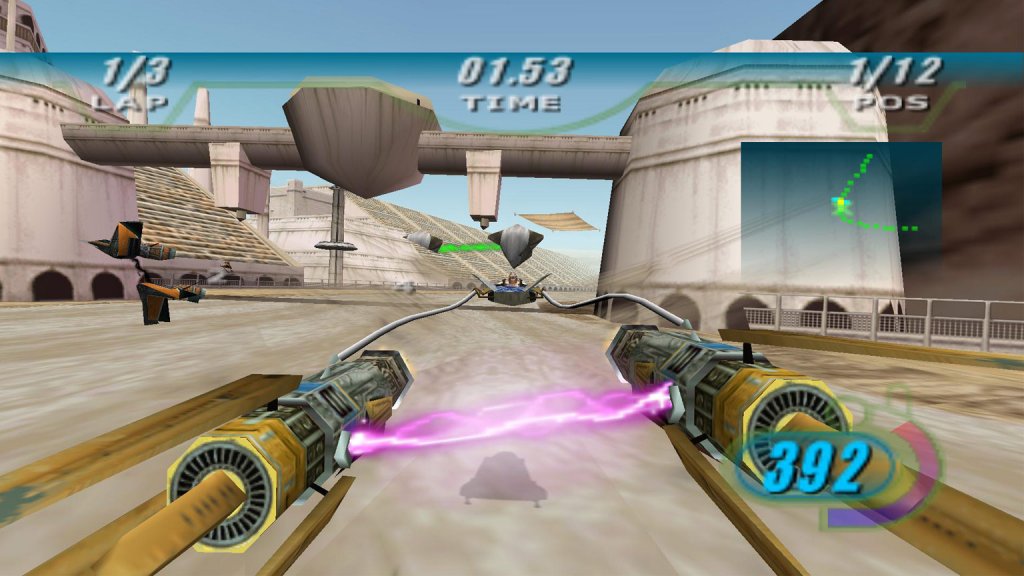 An exhilarating, fast-paced racing game putting you in the driver’s seat of your very own pod, Episode I: Racer was just one of many titles that accompanied The Phantom Menace’s release, but it’s the only certified classic of the lot. There were a few different version of it, N64, Dreamcast, Game Boy, and while they were all OK, none of them quite had the graphical power to do the intense speed depicted in the movie justice. The PC port was a lot better, and using LAN made it an essential multiplayer racing game. Then comes the Arcade port. The music and sound effects pumping out of the inbuilt speakers and the visuals on the large screen were truly something to behold in 1999. The real sell, though, was the game’s unique controls that still have fans queuing up at retro arcade events to experience this amazing piece of hardware. Like in the film, there was no steering wheel, just two handles. You push them both forward to speed up, pull one back and one forward to turn one way, vice versa to turn the other, and both back to break. Hitting sharp left turns into right turns at break-neck speeds felt absolutely incredible back then, and still does now, twenty years on. On top of this, there was a large green boost button – press that when it lit up and you’d feel like someone just fixed your hyperdrive! | SB
An exhilarating, fast-paced racing game putting you in the driver’s seat of your very own pod, Episode I: Racer was just one of many titles that accompanied The Phantom Menace’s release, but it’s the only certified classic of the lot. There were a few different version of it, N64, Dreamcast, Game Boy, and while they were all OK, none of them quite had the graphical power to do the intense speed depicted in the movie justice. The PC port was a lot better, and using LAN made it an essential multiplayer racing game. Then comes the Arcade port. The music and sound effects pumping out of the inbuilt speakers and the visuals on the large screen were truly something to behold in 1999. The real sell, though, was the game’s unique controls that still have fans queuing up at retro arcade events to experience this amazing piece of hardware. Like in the film, there was no steering wheel, just two handles. You push them both forward to speed up, pull one back and one forward to turn one way, vice versa to turn the other, and both back to break. Hitting sharp left turns into right turns at break-neck speeds felt absolutely incredible back then, and still does now, twenty years on. On top of this, there was a large green boost button – press that when it lit up and you’d feel like someone just fixed your hyperdrive! | SB
- THE SOUND EDITING
We raise our lightsabers in salute to Ben Burtt, the unsung hero of the Star Wars universe. He created the title Sound Designer for himself because no other description quite fit what he did at Lucasfilm since the summer of 1976 – literally collecting everyday sounds and distorting them to create the noises made by things that didn’t exist. The unmistakeable lightsaber hum? His TV tuned in-between channels mixed with a 35mm projector working. He’s credited with resurrecting the famous ‘Wilhelm Scream’ sound effect and uses it in most of the films he works on. Burtt’s talent makes the film’s immense visuals truly come to life. Who’d ever think that the sound of the beam walls in the Maul/Jedi fight was a slowed down faulty ceiling fan motor? Or an electric razor inside a steel pot could be altered to become the signature sound of the droid army? Incidentally, the noise when the Neimoidians are receiving an incoming transmission? That’s the sound of Ming the Merciless’ communication screens from the Flash Gordon film serials of the 1930s – a cool nod to Lucas’ original inspiration. | RP
- DARTH MAUL
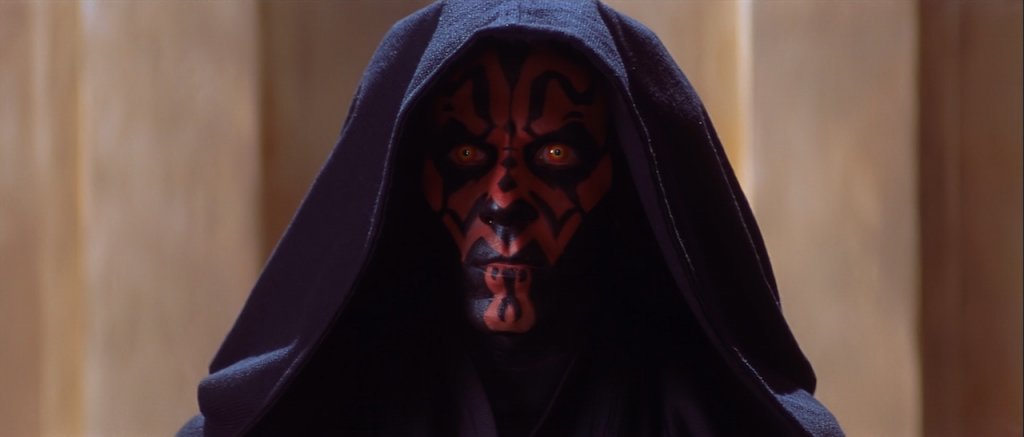 Every great film needs a villain, and this one had its fair share. Ultimately, of course, the slippery Senator Palpatine was the big bad, but in The Phantom Menace, he was only beginning to set his evil machinations in motion. Instead, let’s look to the hooded, black-garbed figure at his side. There are always two Sith. A master and an apprentice. And the apprentice was the satanic-looking, tattoo-sporting Zabrak warrior Darth Maul. A creature of few words, but his actions spoke plenty. His mastery of various forms of martial arts made him virtually unstoppable in hand to hand combat. His weapon of choice – the fearsome double-bladed lightsaber. That lethal combination made him arguably the deadliest single entity in all of that galaxy far, far away. Ultimately, he met his end – literally. He was sliced in half and sent spinning in two pieces down a shaft. But as we later discovered, even that couldn’t keep him down, as he turned up very much alive (but somewhat insane) in a Season 4 episode of The Clone Wars, going on to secure himself a pair of mechanical legs and eventually founder Crimson Dawn, a formidable criminal empire who were behind much of the shady activity seen in Solo: A Star Wars Story. When Darth Sidious told him to “wipe them out… all of them”, we had no doubt Maul could. Gaze into the Sith apprentice’s cold, fearless eyes, and you know you’re staring sudden death in the face. | RP
Every great film needs a villain, and this one had its fair share. Ultimately, of course, the slippery Senator Palpatine was the big bad, but in The Phantom Menace, he was only beginning to set his evil machinations in motion. Instead, let’s look to the hooded, black-garbed figure at his side. There are always two Sith. A master and an apprentice. And the apprentice was the satanic-looking, tattoo-sporting Zabrak warrior Darth Maul. A creature of few words, but his actions spoke plenty. His mastery of various forms of martial arts made him virtually unstoppable in hand to hand combat. His weapon of choice – the fearsome double-bladed lightsaber. That lethal combination made him arguably the deadliest single entity in all of that galaxy far, far away. Ultimately, he met his end – literally. He was sliced in half and sent spinning in two pieces down a shaft. But as we later discovered, even that couldn’t keep him down, as he turned up very much alive (but somewhat insane) in a Season 4 episode of The Clone Wars, going on to secure himself a pair of mechanical legs and eventually founder Crimson Dawn, a formidable criminal empire who were behind much of the shady activity seen in Solo: A Star Wars Story. When Darth Sidious told him to “wipe them out… all of them”, we had no doubt Maul could. Gaze into the Sith apprentice’s cold, fearless eyes, and you know you’re staring sudden death in the face. | RP
- THE TWIST
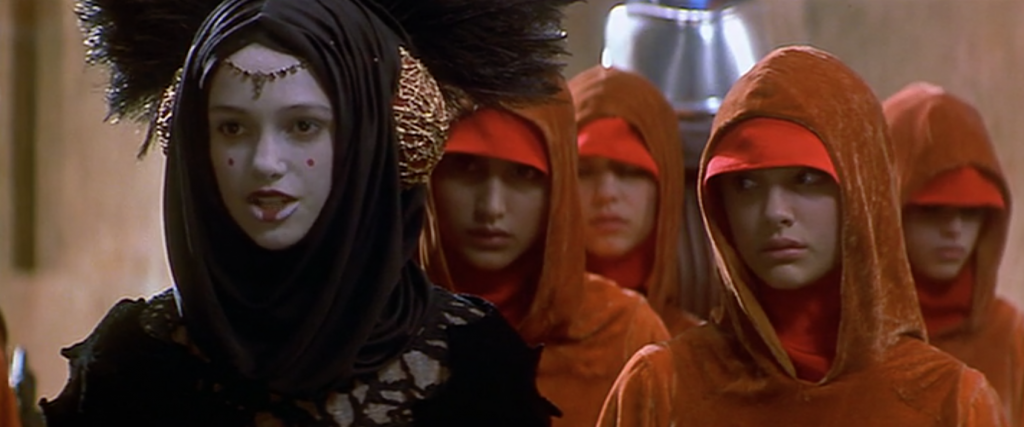 Which actor plays Queen Amidala in The Phantom Menace? If we were to be pedants about it the answer isn’t as straightforward as you think, for in terms of screen time it isn’t actually Natalie Portman at all, it’s future Pirates of the Caribbean star Keira Knightley. In all but a few scenes, Knightley’s character Sabé is actually in the queen’s attire, while the real Amidala watches on from the wings as her own handmaiden, Padmé. We all know this now, but when watching TPM for the first time, this expertly executed third act revelation blindsided the vast majority of us (with the exception of Jedi Master Qui-Gon Jinn, who had it sussed from the get-go). As with the best of twists, it ensures that subsequent viewings of the movie have an added layer of fun – in this case trying to spot whether it’s Portman or Knightley in the kabuki-esque make-up (even the former’s mother couldn’t tell the difference on set!). But why go to such extremes of deception? Well, the opening of Attack of the Clones quickly answered that question. R.I.P. Dormé. | KH
Which actor plays Queen Amidala in The Phantom Menace? If we were to be pedants about it the answer isn’t as straightforward as you think, for in terms of screen time it isn’t actually Natalie Portman at all, it’s future Pirates of the Caribbean star Keira Knightley. In all but a few scenes, Knightley’s character Sabé is actually in the queen’s attire, while the real Amidala watches on from the wings as her own handmaiden, Padmé. We all know this now, but when watching TPM for the first time, this expertly executed third act revelation blindsided the vast majority of us (with the exception of Jedi Master Qui-Gon Jinn, who had it sussed from the get-go). As with the best of twists, it ensures that subsequent viewings of the movie have an added layer of fun – in this case trying to spot whether it’s Portman or Knightley in the kabuki-esque make-up (even the former’s mother couldn’t tell the difference on set!). But why go to such extremes of deception? Well, the opening of Attack of the Clones quickly answered that question. R.I.P. Dormé. | KH
- BEN QUADINAROS
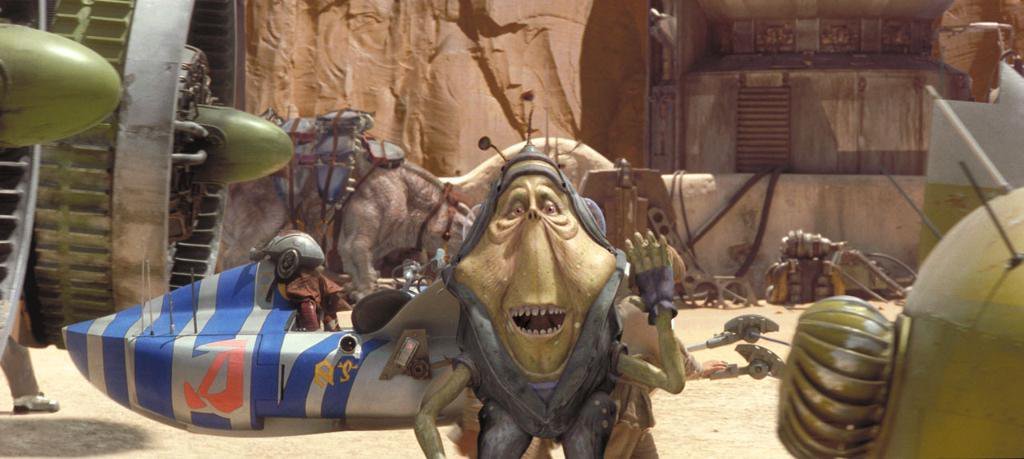 In the grand tradition of the galaxy far, far away, each film introduces fans to a wide and wild array of new evocative characters and gloriously goofy species to capture our imaginations, regardless of how little screen time they’re granted. Of all the prequels, TPM delivered on this in spades, gifting fans dozens of brand new oddballs to forever obsess over. For this writer’s money, the standout must surely be this Munch Bunch-looking weirdo, a competitor of the Boonta Eve Classic. The best kinds of Star Wars background character prompt the audience to ask themselves “who the hell is that?!”, and Quadinaros most definitely had people scratching their heads over his bonkers appearance (courtesy of creature designers Terryl Whitlatch and Iain McCaig). Unlike most characters, he’s sadly only made a fleeting appearance in canon since (Jedi Knight Anakin Skywalker had Ben’s poster on his wall in an episode of The Clone Wars), so we still don’t know much about him other than he stuck with the podracing thing for years to come. Though listed as a shy Toong from the planet Tund (we’re not making this up), his 3.75” action figure tells a different story, giving him a menacing scowl and packaging him with a blaster. What does Hasbro know that we don’t? Maybe Disney will put us out of our misery and give him his own standalone movie. The origins of Quadinaros demand to be explored! Yaddle too. | KH
In the grand tradition of the galaxy far, far away, each film introduces fans to a wide and wild array of new evocative characters and gloriously goofy species to capture our imaginations, regardless of how little screen time they’re granted. Of all the prequels, TPM delivered on this in spades, gifting fans dozens of brand new oddballs to forever obsess over. For this writer’s money, the standout must surely be this Munch Bunch-looking weirdo, a competitor of the Boonta Eve Classic. The best kinds of Star Wars background character prompt the audience to ask themselves “who the hell is that?!”, and Quadinaros most definitely had people scratching their heads over his bonkers appearance (courtesy of creature designers Terryl Whitlatch and Iain McCaig). Unlike most characters, he’s sadly only made a fleeting appearance in canon since (Jedi Knight Anakin Skywalker had Ben’s poster on his wall in an episode of The Clone Wars), so we still don’t know much about him other than he stuck with the podracing thing for years to come. Though listed as a shy Toong from the planet Tund (we’re not making this up), his 3.75” action figure tells a different story, giving him a menacing scowl and packaging him with a blaster. What does Hasbro know that we don’t? Maybe Disney will put us out of our misery and give him his own standalone movie. The origins of Quadinaros demand to be explored! Yaddle too. | KH
- THE TRADE FEDERATION BATTLE DROIDS
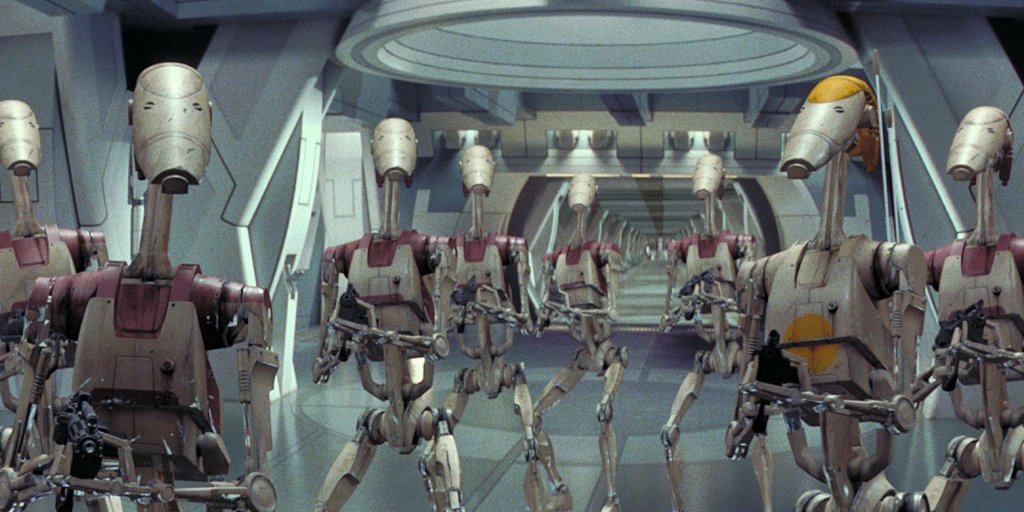 The stormtroopers were the evil infantry for years in Star Wars, the uniformed mass that did the dark biddings of the empire, but with The Phantom Menace there was an excellent opportunity to introduce a new threat for the prequels and the Trade Federation droid army (later to be known as the Separatist droid army) fit the bill nicely. The battle droids were the core of the TF forces, their design was simple but effective (with a nice colour-coded command hierarchy for eagle-eyed fans), and the “activate the droids” scene on Naboo as they’re deployed to wage war on the Gungans is a perfect display of their force by sheer numbers. Plus, in TPM, the battle droids had their authoritative, commanding voices too, before sounding in later films like they had accidentally sat on their own nuts (and bolts). However, the Droidekas (Destroyer Droids) were far greater killing machines and seeing them roll into battle, only to unfold in a beetle-like formation and wage a shielded attack, was slick as hell on the big screen, they even force-d Obi-Wan and Qui-Gon to force leg it! Also, the Droid Starfighters gave audiences a replacement for TIE Fighters too, with the walking, flying, computer-controlled space battalion being a mighty match for any ace Naboo Starfighter pilot, except those pesky 10-year-olds that is…. | JB
The stormtroopers were the evil infantry for years in Star Wars, the uniformed mass that did the dark biddings of the empire, but with The Phantom Menace there was an excellent opportunity to introduce a new threat for the prequels and the Trade Federation droid army (later to be known as the Separatist droid army) fit the bill nicely. The battle droids were the core of the TF forces, their design was simple but effective (with a nice colour-coded command hierarchy for eagle-eyed fans), and the “activate the droids” scene on Naboo as they’re deployed to wage war on the Gungans is a perfect display of their force by sheer numbers. Plus, in TPM, the battle droids had their authoritative, commanding voices too, before sounding in later films like they had accidentally sat on their own nuts (and bolts). However, the Droidekas (Destroyer Droids) were far greater killing machines and seeing them roll into battle, only to unfold in a beetle-like formation and wage a shielded attack, was slick as hell on the big screen, they even force-d Obi-Wan and Qui-Gon to force leg it! Also, the Droid Starfighters gave audiences a replacement for TIE Fighters too, with the walking, flying, computer-controlled space battalion being a mighty match for any ace Naboo Starfighter pilot, except those pesky 10-year-olds that is…. | JB
- THE CAMEOS
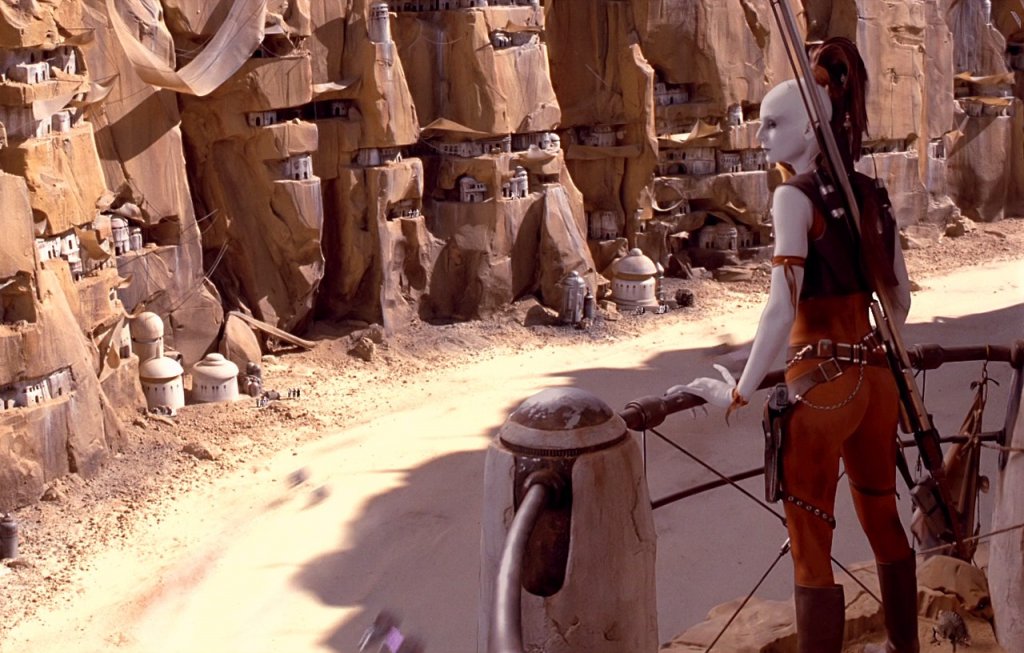 The Phantom Menace continued the franchise trend of filling out the screen with life, as not one bit of space (so to speak) on screen is wasted, and the worlds, civilisations and settings are brimming with a roster of interesting background characters. And in Lucas’ first prequel there were quite a few awesome cameos to spot. Return of the Jedi’s Jabba the Hutt and Bib Fortuna are the most noticeable, turning up at the Hutt-hosted Boonta Eve Classic. Also making an appearance at the sporting event are the Tusken Raiders, who sneakily make target practice of a few unfortunate racers, as well as the Expanded Universe’s bounty hunting legend Aurra Sing, who has since become ingrained in canon (see The Clone Wars and her posthumous name-check in Solo: A Star Wars Story). Then there are the blink-and-miss ones, like a group of senators who resemble bulb-fingered screen icon E.T. (they’re Asogians if we’re being specific), a podrace attendee who looks suspiciously like Indiana Jones, and Warwick Davis as Weazel (a role he reprised in 2018’s aforementioned spin-off film). Additional real-world cameos include Nathan Hamill as a podrace spectator and palace guard, Sofia Coppola as Saché, her sibling and fellow filmmaker Roman Coppola as a senate guard, Dominic West as a palace guard, Lindsay Duncan as TC-14, Richard Armitage and Celia Imrie as Naboo fighter pilots, Sally Hawkins as a parade spectator, and The Tick’s Peter Serafinowicz as the voice of Darth Maul, to name just a few. | JB
The Phantom Menace continued the franchise trend of filling out the screen with life, as not one bit of space (so to speak) on screen is wasted, and the worlds, civilisations and settings are brimming with a roster of interesting background characters. And in Lucas’ first prequel there were quite a few awesome cameos to spot. Return of the Jedi’s Jabba the Hutt and Bib Fortuna are the most noticeable, turning up at the Hutt-hosted Boonta Eve Classic. Also making an appearance at the sporting event are the Tusken Raiders, who sneakily make target practice of a few unfortunate racers, as well as the Expanded Universe’s bounty hunting legend Aurra Sing, who has since become ingrained in canon (see The Clone Wars and her posthumous name-check in Solo: A Star Wars Story). Then there are the blink-and-miss ones, like a group of senators who resemble bulb-fingered screen icon E.T. (they’re Asogians if we’re being specific), a podrace attendee who looks suspiciously like Indiana Jones, and Warwick Davis as Weazel (a role he reprised in 2018’s aforementioned spin-off film). Additional real-world cameos include Nathan Hamill as a podrace spectator and palace guard, Sofia Coppola as Saché, her sibling and fellow filmmaker Roman Coppola as a senate guard, Dominic West as a palace guard, Lindsay Duncan as TC-14, Richard Armitage and Celia Imrie as Naboo fighter pilots, Sally Hawkins as a parade spectator, and The Tick’s Peter Serafinowicz as the voice of Darth Maul, to name just a few. | JB
- THE NABOO ABYSS
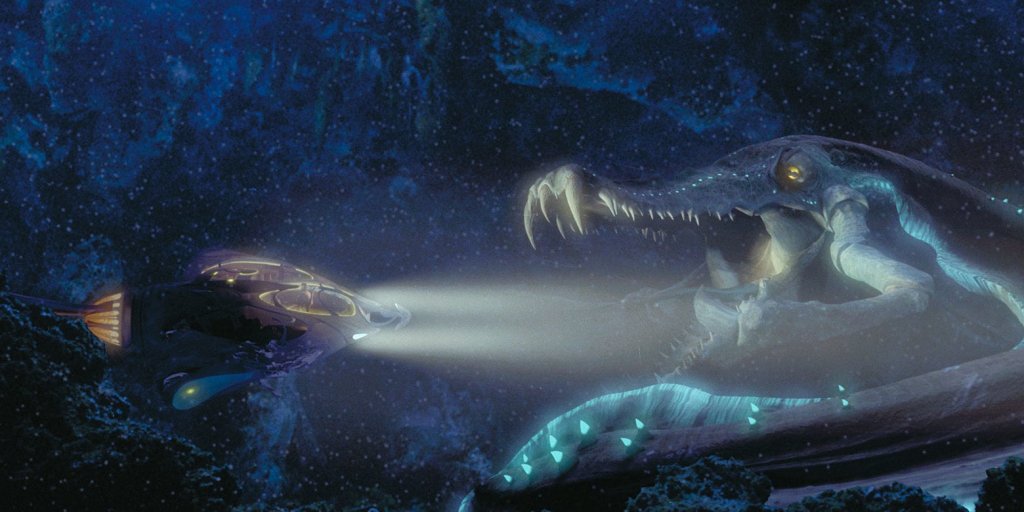 We all love a good Star Wars monster, and as Qui-Gon, Obi-Wan and their newfound guide Jar Jar ventured to Theed through the deep sea planet core, they encountered a good number of them. Aboard their loaned aquatic transport the Tribubble Bongo, the Jedi and hapless Gungan were almost eaten a good three times by cool creatures with “huge-o-teeth”. Among the marine monstrosities they encounter are the glowing, carnivorous Colo Claw Fish, the crustaceanary killer the Opee Sea Killer, and the bloody massive Sando Aqua Monster. There certainly is always a bigger fish in the depths of the Naboo Abyss, and seeing it brought to life on the big screen is easily up there with the slimy spectacle of Empire’s space slug or Jedi’s rancor pit. | JB
We all love a good Star Wars monster, and as Qui-Gon, Obi-Wan and their newfound guide Jar Jar ventured to Theed through the deep sea planet core, they encountered a good number of them. Aboard their loaned aquatic transport the Tribubble Bongo, the Jedi and hapless Gungan were almost eaten a good three times by cool creatures with “huge-o-teeth”. Among the marine monstrosities they encounter are the glowing, carnivorous Colo Claw Fish, the crustaceanary killer the Opee Sea Killer, and the bloody massive Sando Aqua Monster. There certainly is always a bigger fish in the depths of the Naboo Abyss, and seeing it brought to life on the big screen is easily up there with the slimy spectacle of Empire’s space slug or Jedi’s rancor pit. | JB
- THE COSTUMES
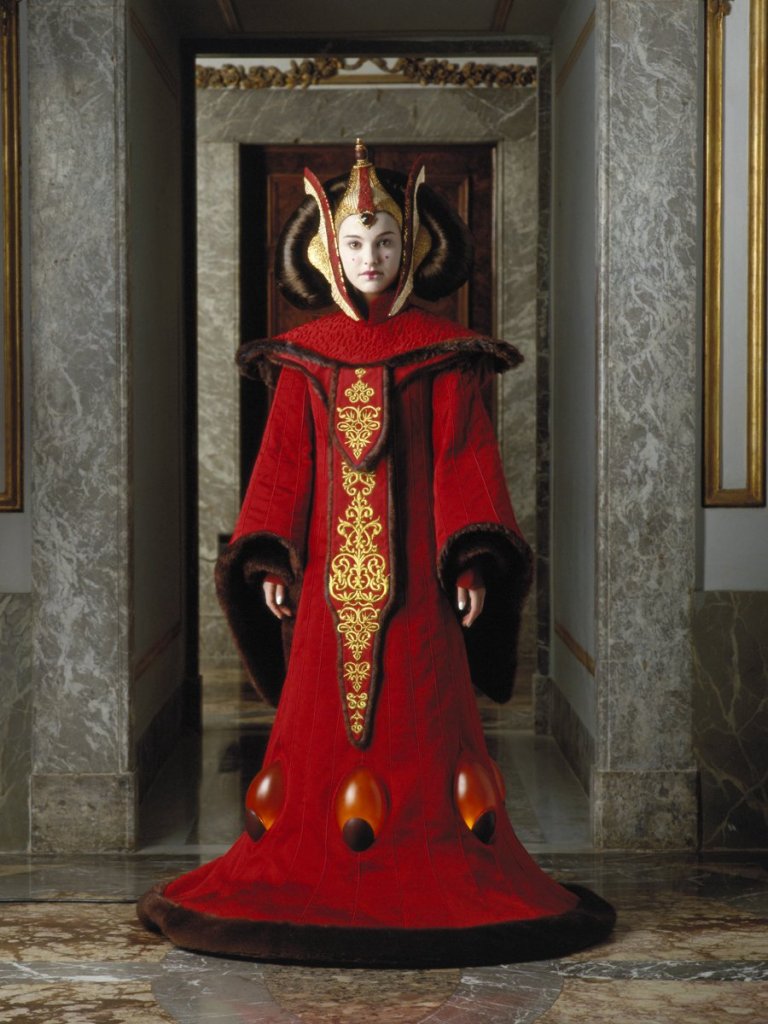 How the stunning costumes designed by Trisha Biggar and her team along with concept artist Iain McCaig didn’t walk away with a trio of Oscars from 2000 to 2006 is still a mystery. The craft and detail woven into these outfits told stories all of their own, adding subliminal layers to this fresh approach to telling the Star Wars story. Padmé Amidala clearly enjoyed the most costume changes in Phantom (ten in total), but even the CG characters had costumes made by Biggar’s department, to help facilitate their transition into the digital realm. The costumes were highly detailed but easy to get in and out of to keep production moving at pace and were visually far removed from the simple silhouettes and materials of the original trilogy as the modest cloaks of the Jedi sat alongside the detailed needlework of Supreme Chancellor Palpatine’s robes. The concept of the used universe was still well represented as we travelled to Mos Espa on Tatooine and the depths of Otoh Gunga, but these stunning costumes, which even today are regularly travelling the world on exhibits, helped visually represent a very different galaxy at the time of The Phantom Menace. | MN
How the stunning costumes designed by Trisha Biggar and her team along with concept artist Iain McCaig didn’t walk away with a trio of Oscars from 2000 to 2006 is still a mystery. The craft and detail woven into these outfits told stories all of their own, adding subliminal layers to this fresh approach to telling the Star Wars story. Padmé Amidala clearly enjoyed the most costume changes in Phantom (ten in total), but even the CG characters had costumes made by Biggar’s department, to help facilitate their transition into the digital realm. The costumes were highly detailed but easy to get in and out of to keep production moving at pace and were visually far removed from the simple silhouettes and materials of the original trilogy as the modest cloaks of the Jedi sat alongside the detailed needlework of Supreme Chancellor Palpatine’s robes. The concept of the used universe was still well represented as we travelled to Mos Espa on Tatooine and the depths of Otoh Gunga, but these stunning costumes, which even today are regularly travelling the world on exhibits, helped visually represent a very different galaxy at the time of The Phantom Menace. | MN
- JAR JAR
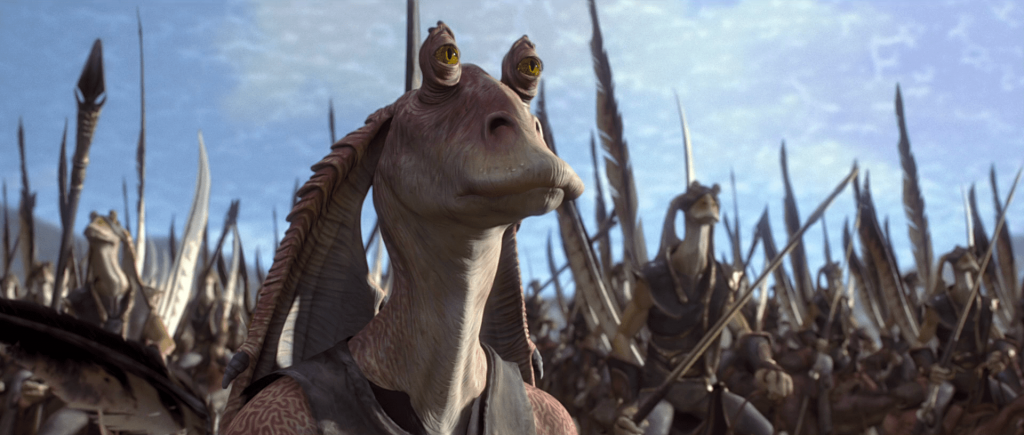 Yes, we’re serious. There’s arguably no other Star Wars character more divisive than Jar Jar Binks. Many of us who are old enough to have seen the original films in theatres were genuinely bothered by this character in the prequels. But there’s something adult fans need to remember: he simply wasn’t created with us in mind. He was made for children – new fans who clamoured to theatres with their families hoping to experience the same magic we did when we saw Episode IV for the first time. People who were children during the prequel era love Jar Jar Binks, and for years this writer couldn’t understand exactly why until I got over my adult snobbery and looked at him objectively through the eyes of a child. Through that lens, the character suddenly becomes very special and very important because he shows children what it means to be brave despite being afraid. Jar Jar overcomes his fear to rise up and take a stand against the Federation, showing children everywhere what courage really looks like. In looking at Jar Jar through the experiences of children, I find I have a newfound love for this character. We also have immense respect for the actor who portrays him, Ahmed Best, who has risen above the criticism and openly discusses his personal struggles with mental health. Both Ahmed and Jar Jar should be commended for their bravery in the face of adversity; many fans of the franchise will benefit from giving this character another look. | VB
Yes, we’re serious. There’s arguably no other Star Wars character more divisive than Jar Jar Binks. Many of us who are old enough to have seen the original films in theatres were genuinely bothered by this character in the prequels. But there’s something adult fans need to remember: he simply wasn’t created with us in mind. He was made for children – new fans who clamoured to theatres with their families hoping to experience the same magic we did when we saw Episode IV for the first time. People who were children during the prequel era love Jar Jar Binks, and for years this writer couldn’t understand exactly why until I got over my adult snobbery and looked at him objectively through the eyes of a child. Through that lens, the character suddenly becomes very special and very important because he shows children what it means to be brave despite being afraid. Jar Jar overcomes his fear to rise up and take a stand against the Federation, showing children everywhere what courage really looks like. In looking at Jar Jar through the experiences of children, I find I have a newfound love for this character. We also have immense respect for the actor who portrays him, Ahmed Best, who has risen above the criticism and openly discusses his personal struggles with mental health. Both Ahmed and Jar Jar should be commended for their bravery in the face of adversity; many fans of the franchise will benefit from giving this character another look. | VB
- THAT SHOWDOWN
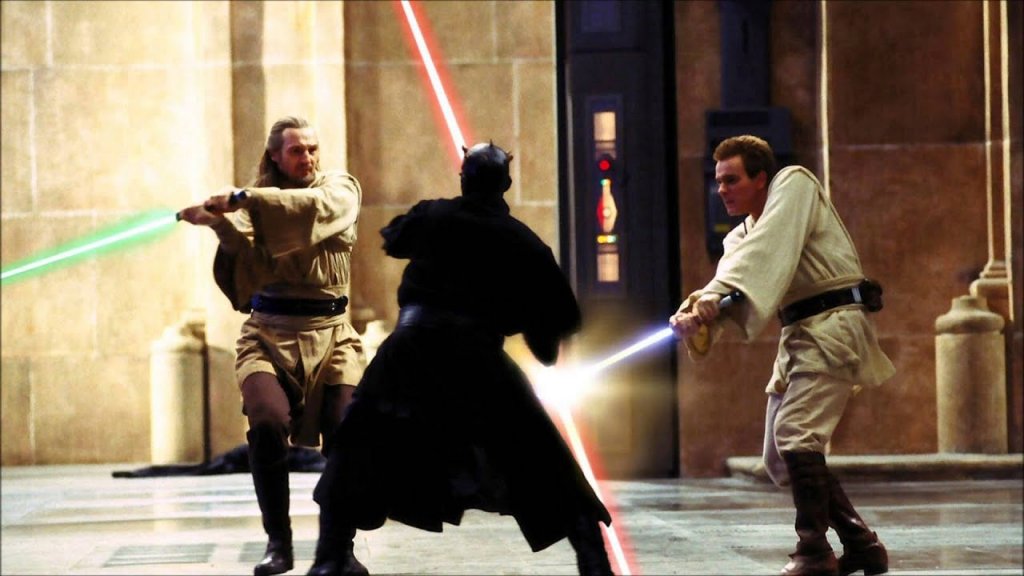 Regardless of where people stand on The Phantom Menace, one thing most of us can agree on is that the closing battle – which sees Qui-Gon Jinn and Obi-Wan Kenobi facing off against the snarling, ruthless Sith apprentice – is utterly stunning. With John Williams’ Duel of the Fates pounding away in the background, audiences were treated to a magical set piece that is right up there as one of the standout moments of the entire franchise. Of course, this didn’t end too well for poor Qui-Gon, with him eventually offed by the vicious Maul. But if the Jedi Master hadn’t been killed here, we never would’ve been treated to that goosebumps-inducing scene of an emotional Obi-Wan waiting to rush in and confront his mentor’s killer; all while Maul smugly and clinically marks his territory, relishing the prospect of murdering another Jedi. Fast-forward through another bout of mesmerising lightsaber action, and this gruelling, jaw-dropping battle would come to a close with Kenobi summoning the Force to flip over his opponent’s head and slice him in two. Mark this one a win for the Jedi. And for the audience who had witnessed something truly special. | AP
Regardless of where people stand on The Phantom Menace, one thing most of us can agree on is that the closing battle – which sees Qui-Gon Jinn and Obi-Wan Kenobi facing off against the snarling, ruthless Sith apprentice – is utterly stunning. With John Williams’ Duel of the Fates pounding away in the background, audiences were treated to a magical set piece that is right up there as one of the standout moments of the entire franchise. Of course, this didn’t end too well for poor Qui-Gon, with him eventually offed by the vicious Maul. But if the Jedi Master hadn’t been killed here, we never would’ve been treated to that goosebumps-inducing scene of an emotional Obi-Wan waiting to rush in and confront his mentor’s killer; all while Maul smugly and clinically marks his territory, relishing the prospect of murdering another Jedi. Fast-forward through another bout of mesmerising lightsaber action, and this gruelling, jaw-dropping battle would come to a close with Kenobi summoning the Force to flip over his opponent’s head and slice him in two. Mark this one a win for the Jedi. And for the audience who had witnessed something truly special. | AP
- THE IMMACULATE CONCEPTION
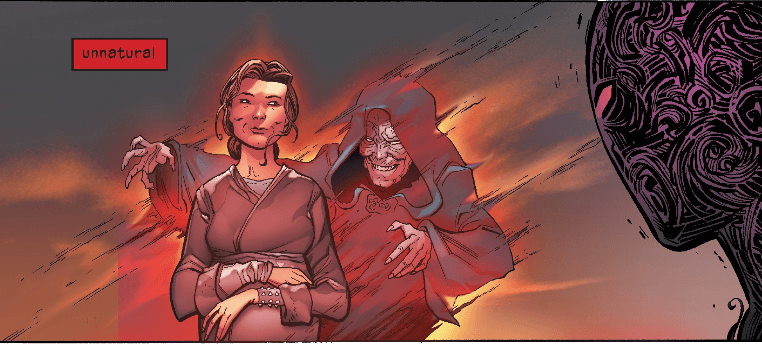 Mysteries have played a pivotal part in powering the franchise from the very beginning – what exactly were those ‘Clone Wars’ Old Ben fleetingly mentioned back in 1977? Tune in 25-years later to find out! Hell, we’re still unsure to this day as to the ‘actual’ identity of the Chosen One. Luke? Anakin? Somebody else? Even the characters themselves can’t agree! Lines of dialogue dropping obtuse details like this help define what’s so rich about the universe, providing fans endless opportunity to debate amongst themselves and let their imaginations fly. TPM has perhaps one of the best examples of this, but it’s again so subtle much of the audience either didn’t notice or had sadly stopped caring by the time Shmi Skywalker uttered the following line of dialogue regarding her 10-year-old son, Anakin: “there was no father… I can’t explain what happened.” Sorry, WHAT?! This was never alluded to again in the movie and the mystery has endured ever since, the clues with which to solve it popping up in Revenge of the Sith’s tremendous Mon Calamari ballet scene and in Legends material such as the 2012 novel Darth Plagueis, ultimately leading up to the subtle resolution in last year’s final issue of the canonical comic book, Darth Vader: Dark Lord of the Sith #25. It had been 19 years since George Lucas introduced the question of Anakin’s true parentage, and we have to pay kudos to the confidence in which he withheld the truth. Because the answer couldn’t be more thematically perfect. What would Supreme Leader Kylo Ren do with the knowledge his great grandfather is technically Emperor Palpatine himself? As TPM’s poster heralded, ‘Every Saga Has a Beginning’, and since December’s Episode IX is promised to be its end, perhaps it’s time this issue of shocking ancestry will be properly dealt with once and for all. | KH
Mysteries have played a pivotal part in powering the franchise from the very beginning – what exactly were those ‘Clone Wars’ Old Ben fleetingly mentioned back in 1977? Tune in 25-years later to find out! Hell, we’re still unsure to this day as to the ‘actual’ identity of the Chosen One. Luke? Anakin? Somebody else? Even the characters themselves can’t agree! Lines of dialogue dropping obtuse details like this help define what’s so rich about the universe, providing fans endless opportunity to debate amongst themselves and let their imaginations fly. TPM has perhaps one of the best examples of this, but it’s again so subtle much of the audience either didn’t notice or had sadly stopped caring by the time Shmi Skywalker uttered the following line of dialogue regarding her 10-year-old son, Anakin: “there was no father… I can’t explain what happened.” Sorry, WHAT?! This was never alluded to again in the movie and the mystery has endured ever since, the clues with which to solve it popping up in Revenge of the Sith’s tremendous Mon Calamari ballet scene and in Legends material such as the 2012 novel Darth Plagueis, ultimately leading up to the subtle resolution in last year’s final issue of the canonical comic book, Darth Vader: Dark Lord of the Sith #25. It had been 19 years since George Lucas introduced the question of Anakin’s true parentage, and we have to pay kudos to the confidence in which he withheld the truth. Because the answer couldn’t be more thematically perfect. What would Supreme Leader Kylo Ren do with the knowledge his great grandfather is technically Emperor Palpatine himself? As TPM’s poster heralded, ‘Every Saga Has a Beginning’, and since December’s Episode IX is promised to be its end, perhaps it’s time this issue of shocking ancestry will be properly dealt with once and for all. | KH
Help us celebrate THE PHANTOM MENACE’s anniversary by getting in touch @STARBURST_mag and sharing your own favourites. And remember…. may the force be with you.
Words: Kris Heys | Robin Pierce | Jack Bottomley | Mark Newbold | Andrew Pollard | Vanessa Berben | Iain Robertson | Stephen Boothroyd
[This article originally appeared in STARBURST #460, which is still available from our online store www.starburstmagazine.com/store]


